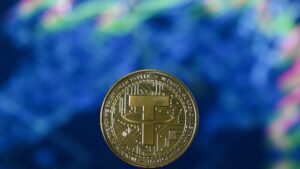Understanding Stablecoins: Clarifications from the SEC and What They Mean for the Future of Crypto
Welcome to the Extreme Investor Network, your go-to source for insights on innovative investment opportunities. Today, we’re diving into an increasingly important topic in the cryptocurrency space: stablecoins. Recently, the U.S. Securities and Exchange Commission (SEC) clarified its stance on these digital assets, offering valuable insights for both investors and crypto enthusiasts alike.
What Are Stablecoins?
Stablecoins like Tether (USDT) and Circle’s USD Coin (USDC) have become cornerstone assets in the crypto market. These digital currencies are designed to maintain stable values, typically pegged to the U.S. dollar on a one-for-one basis. They are backed by reserves that are considered low-risk and highly liquid, making them an attractive alternative to traditional fiat currencies in the volatile world of cryptocurrencies.
The SEC’s recent announcement has shed light on which stablecoins are classified as “covered stablecoins,” stating that these assets do not fall under the category of securities. This clarification is vital for investors considering the regulatory landscape surrounding digital currencies.
The SEC’s Definition of Covered Stablecoins
The SEC explicitly defines "covered stablecoins" as those designed to maintain a stable value relative to the U.S. dollar, can be redeemed for dollars on a one-to-one basis, and are backed by assets that meet or exceed the redemption value of the stablecoins in circulation.
In its statement, the SEC emphasized that covered stablecoins’ structure does not permit issuers to pay interest directly to holders. This stipulation contrasts with the evolving universe of yield-bearing stablecoins, which could be caught under securities regulations if they offer interest payments.
Coinbase CEO Brian Armstrong has voiced his concerns regarding this issue, advocating for legislative changes that would allow issuers to pay interest on stablecoins without the obligation of classification as securities. This tension between innovation and regulation is something we at the Extreme Investor Network keep a keen eye on.
Legislative Developments: A Closer Look
As stablecoins gain traction, the legislative landscape is also heating up. Two significant bills are currently under consideration: the Stablecoin Transparency and Accountability for a Better Ledger Economy Act (STABLE) and the Guiding and Establishing National Innovation for U.S. Stablecoins Act (GENIUS). Such legislation aims to provide a framework for the regulation of stablecoins, helping to enhance transparency and accountability in this burgeoning space.
Interestingly, stablecoins have shown resilience and growth despite regulatory uncertainty, marking an 11% increase so far this year and a robust 47% growth over the past year. Their applications, ranging from enabling swift transactions to serving as collateral in decentralized finance (DeFi), position them as key players in the crypto market.
The Future of Stablecoins in the Financial Ecosystem
As the stablecoin market expands, financial institutions and individual users alike are recognizing their potential for payments, trade, and more. According to JPMorgan, the market cap of yield-bearing stablecoins is increasing rapidly—surpassing $13 billion, or 6% of the total stablecoin universe. This growth emphasizes the need for clear regulation and guidance from authorities, paving the way for innovation and stability within the financial sector.
At Extreme Investor Network, we believe that understanding these developments is crucial for investors looking to navigate the evolving landscape of cryptocurrency. With #Stablecoins on the rise and regulatory frameworks taking shape, now is the time to deepen your insights and adapt your investment strategies.
Conclusion
The SEC’s recent guidance on covered stablecoins indicates a significant step toward clarity in the cryptocurrency sector. For investors, this means a potential increase in options for stable assets that comply with regulatory expectations. Whether you are a seasoned investor or just starting, keeping an eye on stablecoins’ evolution can provide valuable opportunities.
Stay tuned to the Extreme Investor Network for ongoing updates, expert analysis, and tailored insights into the world of investing. If you’re serious about elevating your investment game, we invite you to join our community as we explore the cutting-edge developments shaping our financial future. Happy investing!

